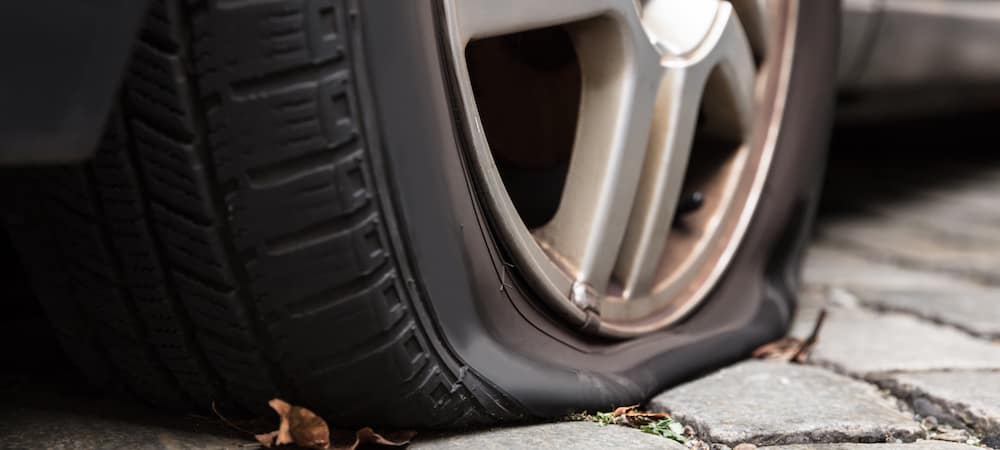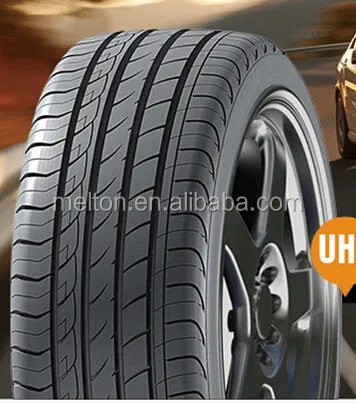

The cords for a passenger car and a truck vary because the truck’s cords will be arranged so that it can handle a heavier load.

Cords - Cords are strands of steel, fiberglass, rayon, nylon or polyester that form the plies of a tire and help determine load capacity.Belts - Belts lie directly beneath the tread, reinforcing and stabilizing it, which helps to improve tread wear.
 Plies - Plies run across the tire from bead to bead and form the interior core of the tire. Bead - The bead consists of loops of stiff wire embedded in rubber. The basic components of radial tires are: Low profile tires have a short sidewall and a wide contact patch that is effective in converting the driver’s input into responsive handling, corner stability and traction. The aspect ratio of a tire consists of the width of the tire in relation to the height or diameter. The tire contact patch (footprint) influences the tire’s performance. Radial tires feature longer tread life, flexible sidewalls and quite a few components designed to provide the best acceleration, steering control and handling, ride comfort, fuel economy, and a quiet ride. The radial cords in the sidewall of a radial tire allow it to act like a spring, and the rigid steel belts help reinforce the tread region. This design is intended to help prevent the plies from rubbing against each other as the tire flexes. The plies run straight out at ninety-degree angles to the direction of travel from the wheel rim to the center of the tire just like rays extend from the sun. They get their name from the way the plies are arranged in the tire. Radial tires are the standard tire used today as current designs have helped improve gas mileage. This article is intended to provide you with information on radial and run-flat tires, their maintenance and the use of sealants and pumps. Tire evolution changed tires to a radial design which helped provide better characteristics of longer tread life, and less rolling resistance. During the next fifty years automobile tire design consisted of an inner tube that contained compressed air, and an outer casing that protected the inner tube and provided traction. Tires have evolved since the first solid rubber tires appeared in the mid-1800s. Tire type and correct periodic maintenance are important components in helping to promote smooth and efficient open-road performance and vehicle ride comfort.
Plies - Plies run across the tire from bead to bead and form the interior core of the tire. Bead - The bead consists of loops of stiff wire embedded in rubber. The basic components of radial tires are: Low profile tires have a short sidewall and a wide contact patch that is effective in converting the driver’s input into responsive handling, corner stability and traction. The aspect ratio of a tire consists of the width of the tire in relation to the height or diameter. The tire contact patch (footprint) influences the tire’s performance. Radial tires feature longer tread life, flexible sidewalls and quite a few components designed to provide the best acceleration, steering control and handling, ride comfort, fuel economy, and a quiet ride. The radial cords in the sidewall of a radial tire allow it to act like a spring, and the rigid steel belts help reinforce the tread region. This design is intended to help prevent the plies from rubbing against each other as the tire flexes. The plies run straight out at ninety-degree angles to the direction of travel from the wheel rim to the center of the tire just like rays extend from the sun. They get their name from the way the plies are arranged in the tire. Radial tires are the standard tire used today as current designs have helped improve gas mileage. This article is intended to provide you with information on radial and run-flat tires, their maintenance and the use of sealants and pumps. Tire evolution changed tires to a radial design which helped provide better characteristics of longer tread life, and less rolling resistance. During the next fifty years automobile tire design consisted of an inner tube that contained compressed air, and an outer casing that protected the inner tube and provided traction. Tires have evolved since the first solid rubber tires appeared in the mid-1800s. Tire type and correct periodic maintenance are important components in helping to promote smooth and efficient open-road performance and vehicle ride comfort.







 0 kommentar(er)
0 kommentar(er)
